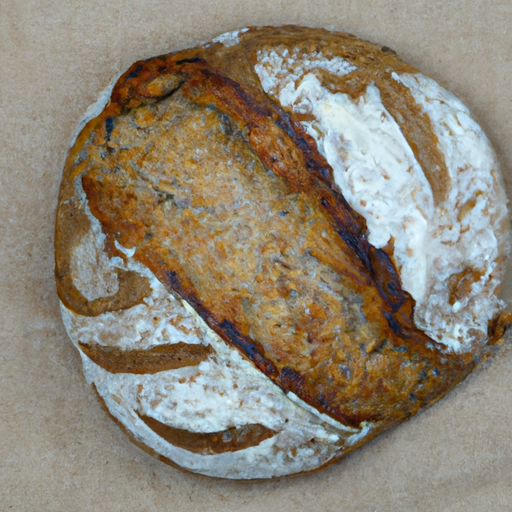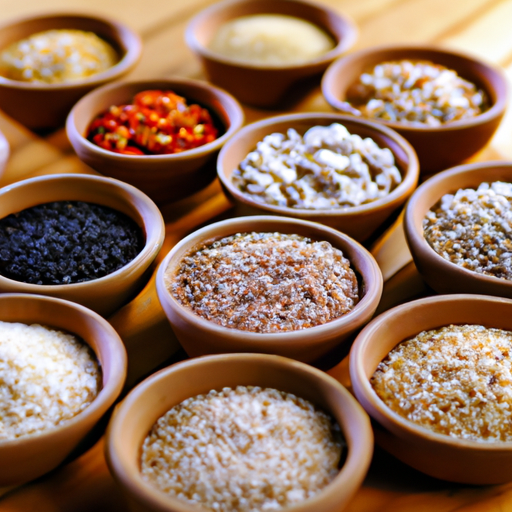Ancient grains are making a powerful comeback in contemporary kitchens worldwide. These nutritional powerhouses are revolutionizing everything from artisanal bread-making to innovative plant-based dishes. Discover how traditional grains like quinoa, amaranth, and teff are reshaping modern cooking.

In recent years, a quiet revolution has been taking place in kitchens across the globe as ancient grains reclaim their place in modern cuisine. These forgotten cereals, some dating back thousands of years, are not just trendy ingredients – they represent a return to nutritionally dense, sustainable food sources that offer unique flavors and textures while addressing contemporary dietary needs.
Understanding Ancient Grains
Ancient grains are defined as cereals and pseudocereals that have remained largely unchanged over the last several hundred years. Unlike modern wheat, which has been extensively modified, these grains retain their original genetic makeup. Some of the most prominent ancient grains include:
Quinoa: A complete protein source originating from the Andes Amaranth: A protein-rich grain used by the Aztecs Teff: Ethiopia's tiny, nutrient-packed grain Kamut: An ancient wheat variety from Egypt Spelt: A distant cousin of modern wheat with a nutty flavor Freekeh: Young green wheat that's been roasted
Nutritional Benefits
The resurgence of ancient grains is partly driven by their impressive nutritional profiles. These grains typically offer:
- Higher protein content than modern wheat - Rich array of minerals including iron, magnesium, and zinc - Excellent source of dietary fiber - Complex carbohydrates for sustained energy - Various antioxidants and bioactive compounds
Culinary Applications
Breakfast Innovations: Ancient grains have revolutionized the breakfast table. Try these applications:
- Teff porridge with caramelized bananas and honey - Amaranth morning grain bowls with fresh fruit - Quinoa breakfast cookies - Kamut granola with nuts and dried fruits
Baking with Ancient Grains:
Baking with ancient grains requires understanding their unique properties:
- Spelt can often be substituted 1:1 for modern wheat flour - Teff produces dense, moist baked goods - Quinoa flour adds protein but needs to be mixed with other flours - Amaranth works well in quick breads and cookies
Savory Dishes:
Ancient grains excel in savory applications:
- Freekeh pilaf with roasted vegetables - Kamut risotto with wild mushrooms - Quinoa-stuffed bell peppers - Amaranth polenta with braised greens
Cooking Techniques and Tips
Proper preparation is crucial for optimal results:
Soaking: - Most ancient grains benefit from soaking - Reduces cooking time and improves digestibility - Typically requires 6-8 hours or overnight
Cooking Methods: - Toast grains before cooking to enhance flavor - Maintain proper liquid ratios for each grain - Consider pressure cooking for faster results
Storage: - Keep whole grains in airtight containers - Store in a cool, dark place - Whole grain flours should be refrigerated
Integrating Ancient Grains into Modern Diets
Meal Planning:
- Start with familiar preparations like porridge or pilaf - Gradually introduce new grains one at a time - Experiment with different combinations - Consider batch cooking for convenience
Dietary Considerations:
- Many ancient grains are naturally gluten-free - High protein content supports plant-based diets - Good options for those with wheat sensitivities - Suitable for whole food and clean eating approaches
Sustainability Aspects
Environmental Benefits:
- Many ancient grains are drought-resistant - Require fewer pesticides than modern crops - Help maintain crop diversity - Often grown using traditional methods
Social Impact:
- Support small-scale farmers - Preserve traditional agricultural practices - Promote food sovereignty - Maintain cultural food heritage
Challenges and Solutions
Common Obstacles:
- Higher cost compared to conventional grains - Limited availability in some areas - Unfamiliarity with preparation methods - Storage requirements
Solutions:
- Buy in bulk when possible - Join buying clubs or co-ops - Learn proper storage techniques - Start with small quantities for experimentation
Future Trends
The ancient grain movement continues to evolve:
- Growing availability of ancient grain products - Increased research into cultivation methods - Development of new culinary applications - Rising interest in heritage varieties
As we continue to face challenges in global food security and nutrition, ancient grains offer solutions that bridge traditional wisdom with modern needs. Their versatility in the kitchen, impressive nutritional profiles, and sustainability credentials make them more than just a passing trend – they represent a vital part of our culinary future.
By embracing these traditional grains, we not only enhance our daily nutrition but also participate in preserving agricultural biodiversity and cultural food heritage. Whether you're a professional chef or home cook, incorporating ancient grains into your culinary repertoire opens up a world of possibilities for creating nutritious, delicious, and sustainable meals.



